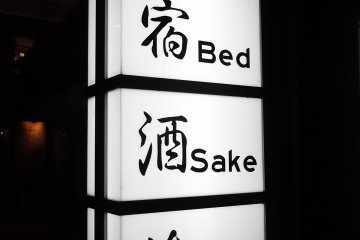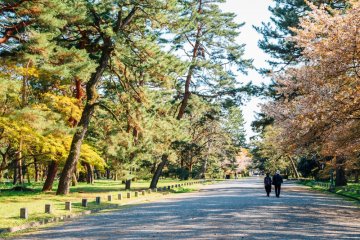
Kuil Shimogamo di Musim Panas
Tomoko KamishimaKuil Shimogamo di Musim Panas: Jalan untuk melewati pintu utama kuil melewati hutan Tadasu-no-mori. Nikmatilah jalan-jalan dengan nyaman di tepi air!

The Kamo Shrines, Shimogamo Shrine and Kamigamo Shrine are both recognized as UNESCO World Heritage Sites. They are two of the most important and oldest shrines in Kyoto. They are located in the north of the city and are intentionally placed to ward off evil and Protect the city In fact, the two Kamo shrines are even older than the city, which became the national capital in 794.
Shimogamo Shrine is located at the confluence of the Takano and Kamo Rivers and is surrounded by a forest that contains trees up to 600 years old. The Kamigamo Shrine is about three and a half kilometers upstream and is known for two sand cones on its site, which have a cleaning function for the sanctuary and have been ritually made since ancient times.
Together the shrines host one of Kyoto's three biggest festivals, the Aoi Matsuri, which takes place on May 15th.
15-minute walk from Denmachi-Yanagi Station (Keihan Line)
5-minute bus ride from Denmachi-Yanagi Station to Shimogamojinja-mae stop (via city bus no. 4)

Kuil Shimogamo di Musim Panas: Jalan untuk melewati pintu utama kuil melewati hutan Tadasu-no-mori. Nikmatilah jalan-jalan dengan nyaman di tepi air!

Saksikan para pemanah menembakkan panah berapi dari atas tunggangannya!

Hostel yang terletak di Kawaramachi, jantung kota Kyoto ini menurut saya adalah opsi terbaik yang bisa pejalan dapatkan ketika berkunjung ke Kyoto. Selain letaknya yang strategis, hostel ini juga memiliki harga yang bersahabat, bangunannya baru dibuat, fasilitas yang baik dan tentunya staf yang bersahabat.

Piece Hostel Sanjo baru saja dibuka pada Juli 2015. Dulunya merupakan sebuah penginapan tradisional a la Jepang, ryokan, yang kemudian direnovasi menjadi sebuah hostel stylish di pusat kota Kyoto. Bisa dibilang ini adalah hostel mewah. Kalau dipikir lagi, hostel itu adalah cara termurah untuk mendapatkan sebuah akomodasi namun ternyata yang namanya hostel gak mesti sempit, kumuh, berisik, atau gak bersih. Konsep luxury hostel yang diusung oleh Piece Hostel Sanjo ini sangatlah terasa, bahkan dari sebelum memasuki lobinya.

Di bekas ibukota Jepang di Kyoto, Jam Hostel Kyoto Gion adalah hostel ramah untuk backpackers, lokasinya pusat dan nyaman dalam hal transportasi, jalan-jalan, belanja dan kehidupan malam.

Grand Burger di Kyoto menghidangkan burger lezat di sebuah tempat makan yang nyaman, hanya beberapa langkah dari dinding Istana Kekaisaran

Kelas memasak Emi, seperti berlatar belakang musik film yang terdengar semakin keras, membawa kehidupan kejalannya sendiri di Kelas Memasak Kyoto Uzuki.

Kafe elegan nan menenangkan yang terletak hanya beberapa langkah dari keramaian Kyoto.

The Kyoto Imperial Palace is the former ruling palace of the Emperor of Japan. Since the Meiji Restoration in 1869, the Emperors have resided at the Tokyo Imperial Palace, while the preservation of the Kyoto Imperial Palace was ordered in 1877. [Wikipedia] A reservation is required to visit the Kyoto Imperial Palace.

Located in the heart of the city, Kyoto Gyoen National Garden is a natural oasis perfect for escaping the busyness of urban life. This vast green space surrounds the Kyoto Imperial Palace and Kyoto Sento Imperial Palace and was designated as a national garden in 1949. The garden is open all day, everyday, and free to enter. Enjoy the beautifully landscaped trails and seasonal flowers, such as cherry blossoms, wisterias, plums, and lilies, or bring a blanket and have a picnic on the lush grass. Given the garden’s abundance of nature, it is a popular place for tourists and residents alike and is always filled with joggers, dog walkers, picnickers, and cyclists. The greenspace also has athletic facilities. Aside from its natural beauty, the garden is also home to numerous historical and traditional buildings. Of course, the garden’s most treasured structure is the Kyoto Imperial Palace. The imperial palace was home to Japan’s emperors until the Meiji Restoration, when Japan’s capital moved from Kyoto to Tokyo. Today, the campus offers us a glimpse into the past with its historic halls, traditional designs, opulent decor, vermillion accents, residences, and more. You can visit the palace year-round. The Kyoto Sento Imperial Palace, which served as the palace for former emperors, is also available to tour. Apply for tickets online in advance or obtain walk-in tickets (please note that walk-in tickets are limited). The tour features an hour-long stroll through the palace’s immaculate gardens. Kyoto Gyoen is also the site of Shu Sui Tei Teahouse where you can experience tea ceremonies for 100 yen per person, the Kaninnomiya Residence, and numerous smaller shrines. Go on a leisurely walk and enjoy the combination of idyllic nature and historic learning.

Enkō-ji, is a Zen Buddhist temple located near the Shugakuin Imperial Villa at Sakyō-ku, Ichijo-ji, Kotani-cho, in northeast Kyoto, Japan. It is famous for its fall foliage and Suikinkutsu. [Wikipedia]